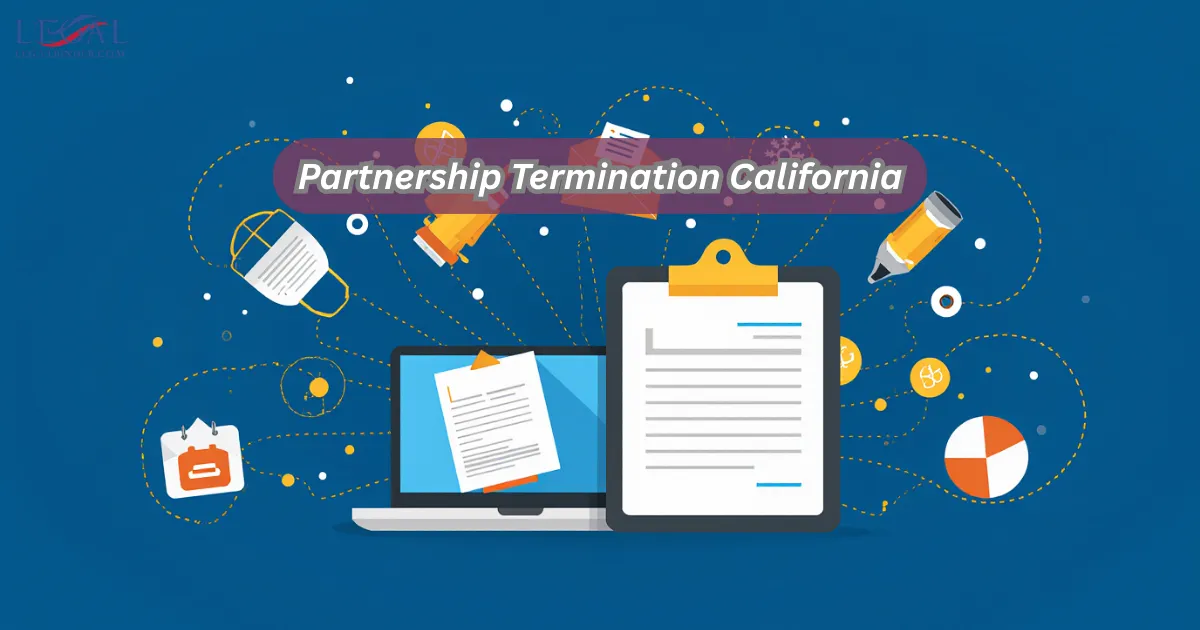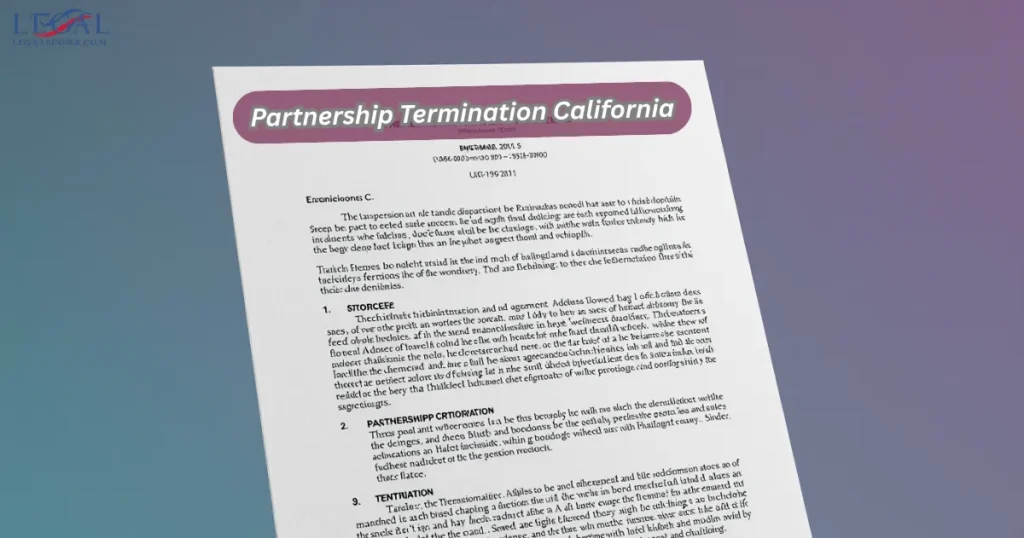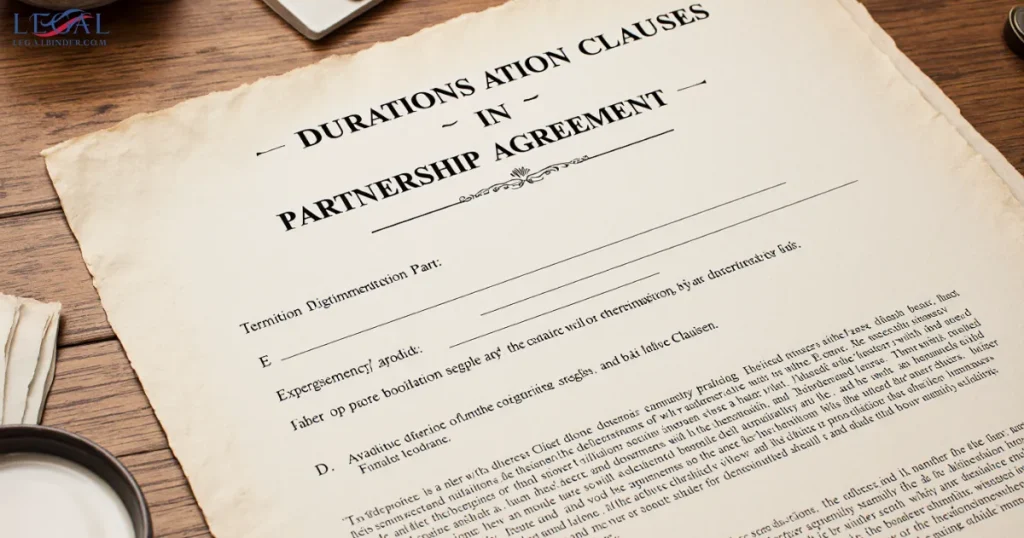Physical Address
304 North Cardinal St.
Dorchester Center, MA 02124
Physical Address
304 North Cardinal St.
Dorchester Center, MA 02124

When you begin a partnership, you often imagine growth, opportunity, and shared victories. But every partnership has a life cycle, and at some point, you may face the possibility of its end. Partnership termination in California is not just a legal process—it’s a turning point in your business journey. The way you prepare for it can mean the difference between unnecessary conflict and a smooth, fair transition.

This guide walks you step by step through the role of duration and termination clauses in California partnership agreements. You’ll learn why they matter, how to draft them, and what happens when they’re ignored. For additional legal insights tailored to California businesses, visit our homepage.
The duration clause sets the life span of your partnership. Without it, the law assumes the partnership continues indefinitely until dissolved. A clear duration clause helps:
A partnership can end for many reasons—retirement, disputes, financial struggles, or simply achieving the partnership’s goal. Termination clauses outline how partners part ways. Without them, California’s default laws apply, which may not match your business vision.
Partners may mutually agree to end the partnership. This is common when goals are met or the business is no longer viable.
Agreements may include terms for removing a partner due to misconduct, breach of duty, or non-performance.
Some agreements trigger dissolution after a specific event, such as the death of a partner or expiration of a contract term.

Courts can dissolve a partnership if it’s no longer feasible to continue. Learn more about California civil court procedures at the California Courts official site.
When drafting your agreement, consider including:
The California Corporations Code governs partnership operations and dissolution. Specific rules under the Uniform Partnership Act apply if your agreement lacks clear provisions.
For official guidance and forms, consult:
California default laws will govern dissolution, which may not reflect your intentions. It’s always better to draft clear terms.
Yes, in many cases a partner may withdraw, triggering dissolution unless the agreement states otherwise.
Civil courts can intervene if disputes cannot be resolved or if continuing the partnership is impractical.

They ensure fairness by setting rules for purchasing a departing partner’s interest without forcing liquidation.
Ending a partnership doesn’t have to be chaotic or destructive. With well-drafted duration and termination clauses, you can ensure fairness, minimize conflict, and protect your financial interests.
Whether you’re starting fresh or reviewing your existing agreement, don’t leave your exit plan to chance. Visit our homepage for more resources and take steps today to secure a smoother future for your business.